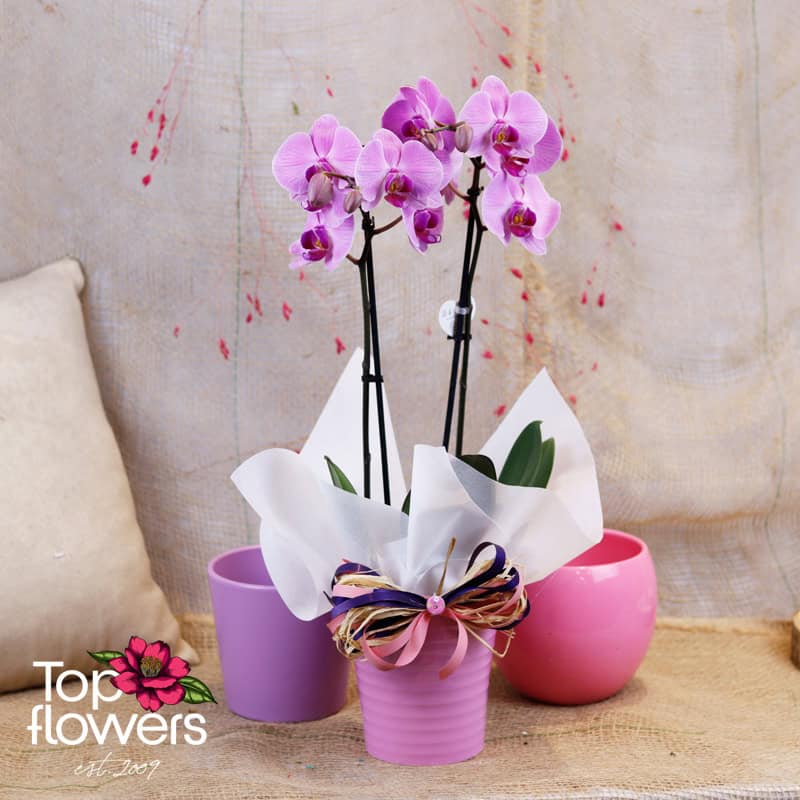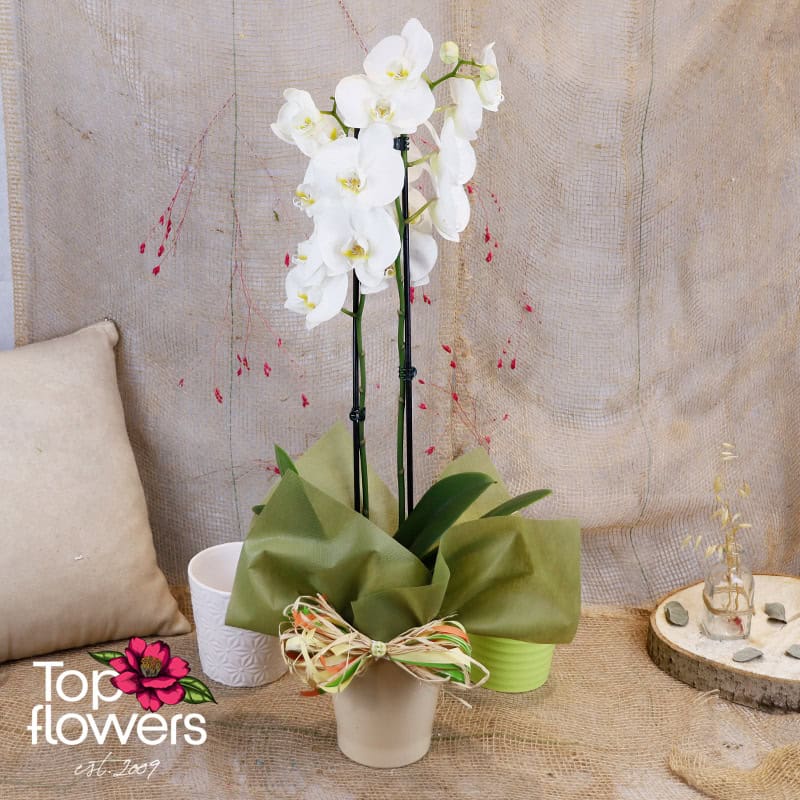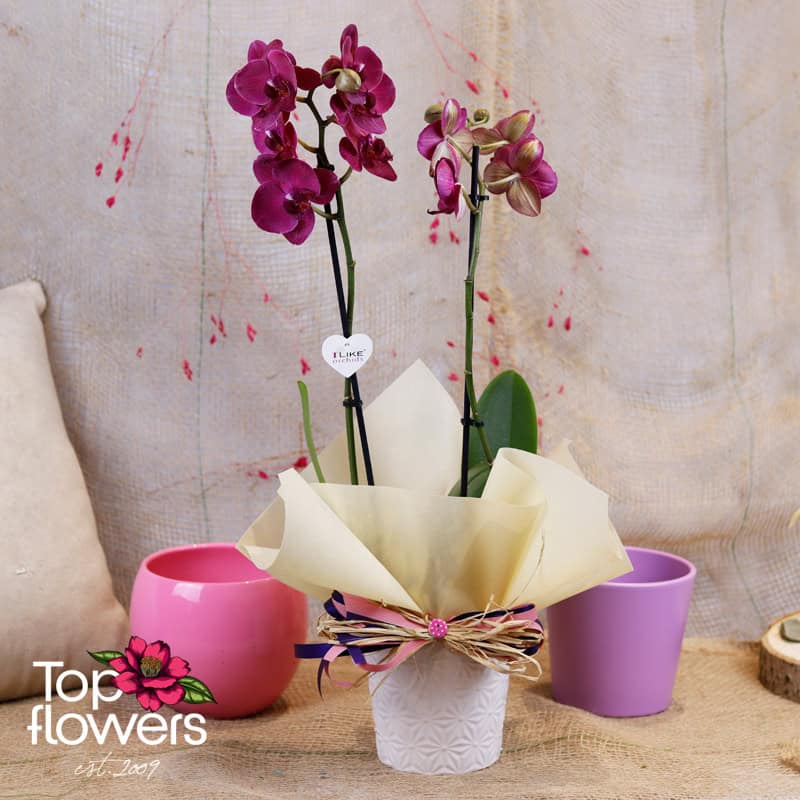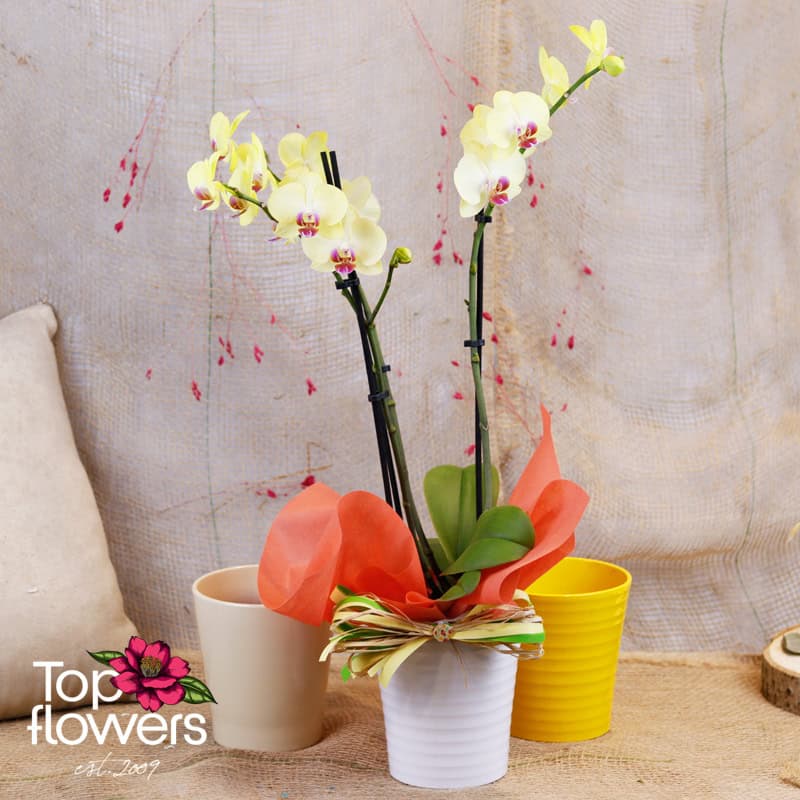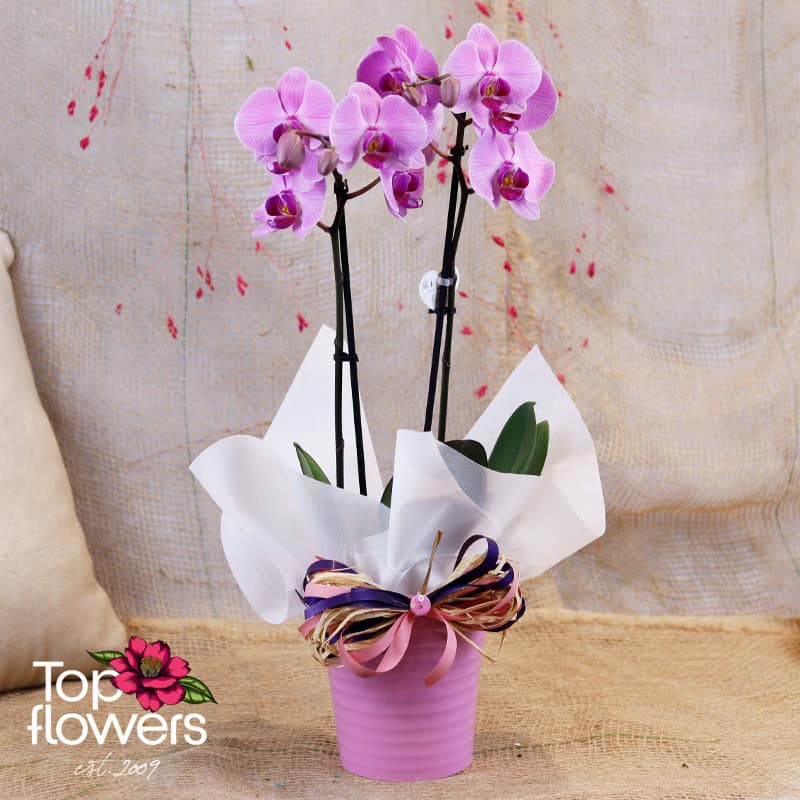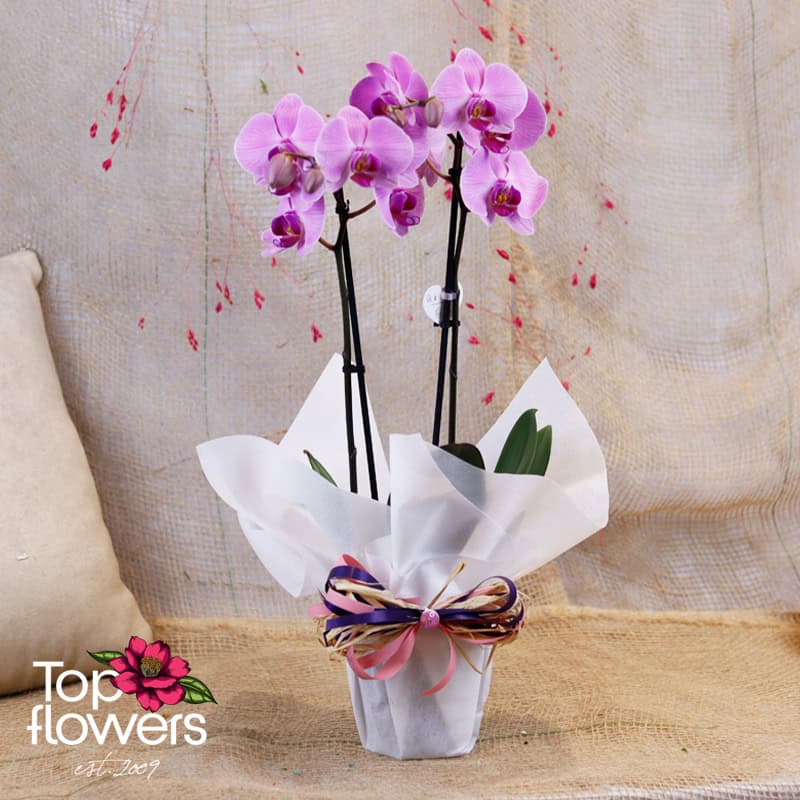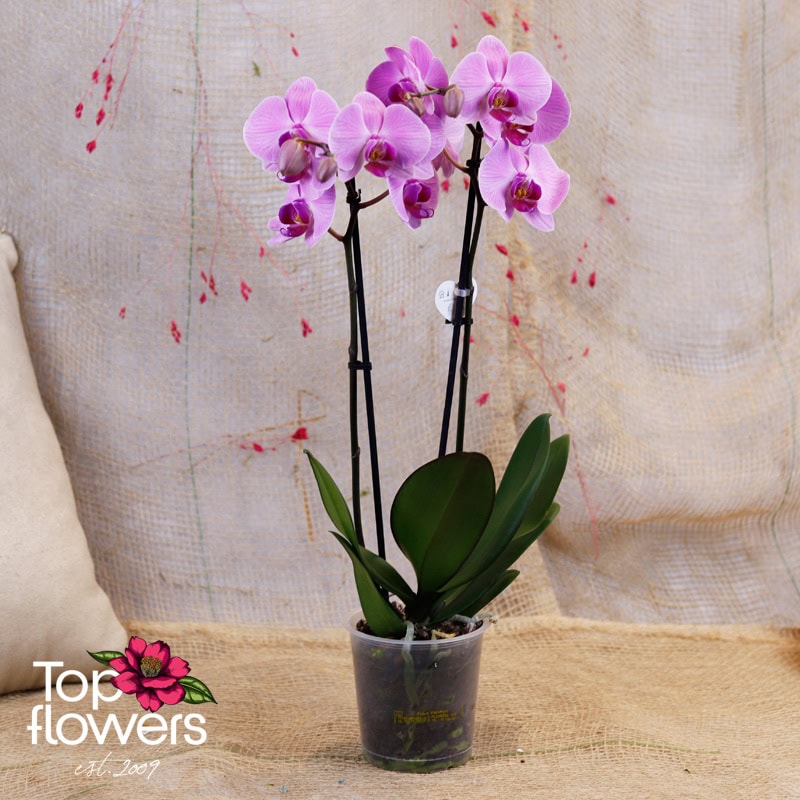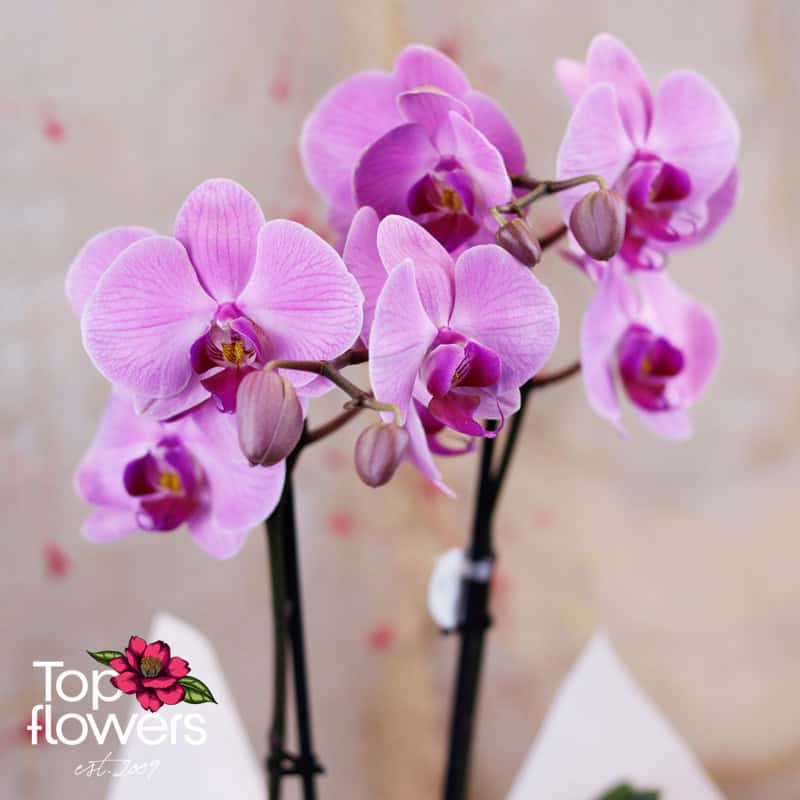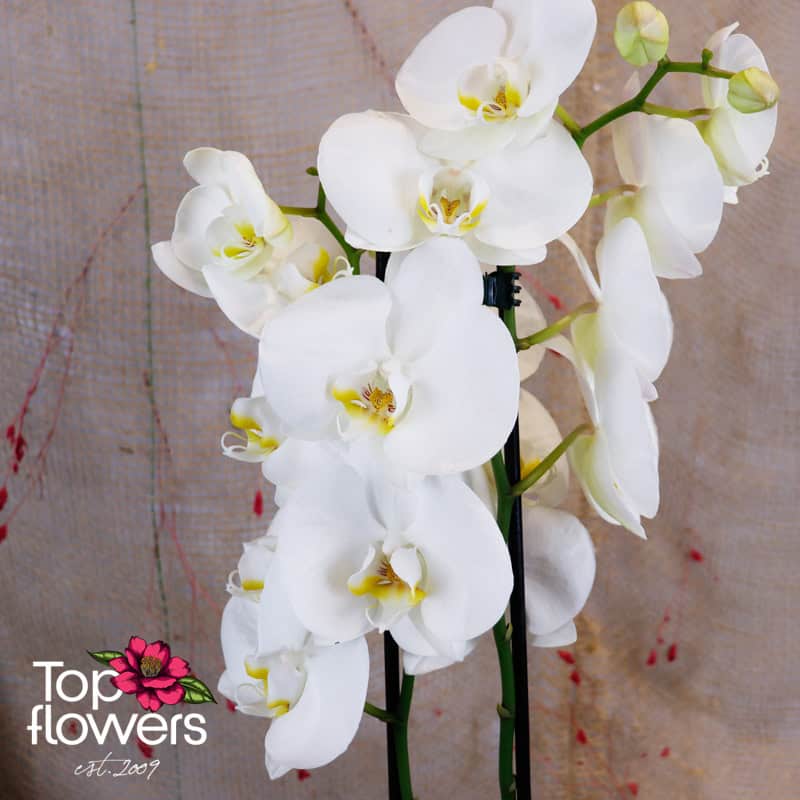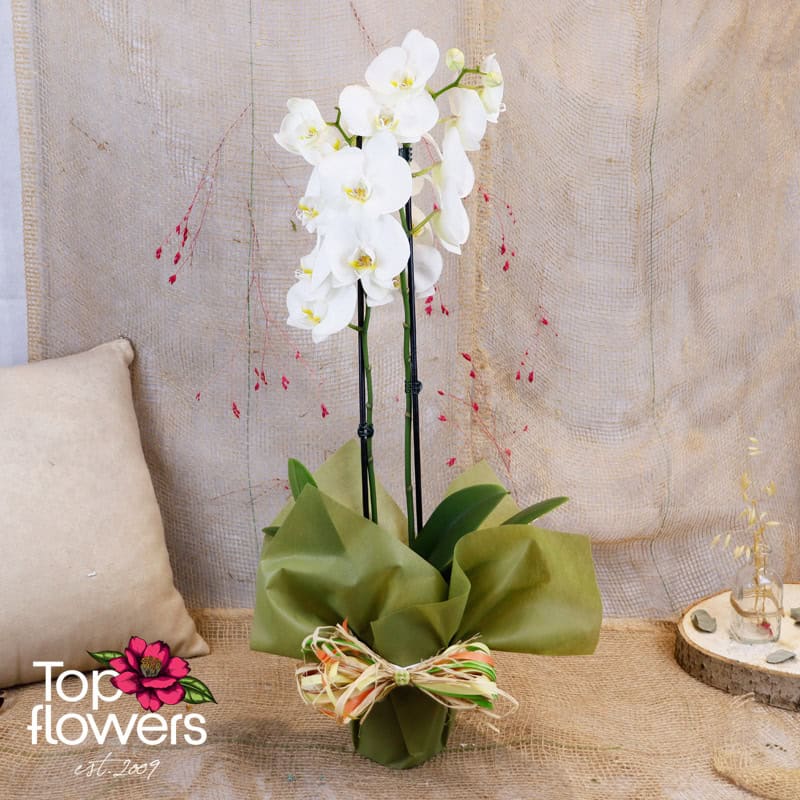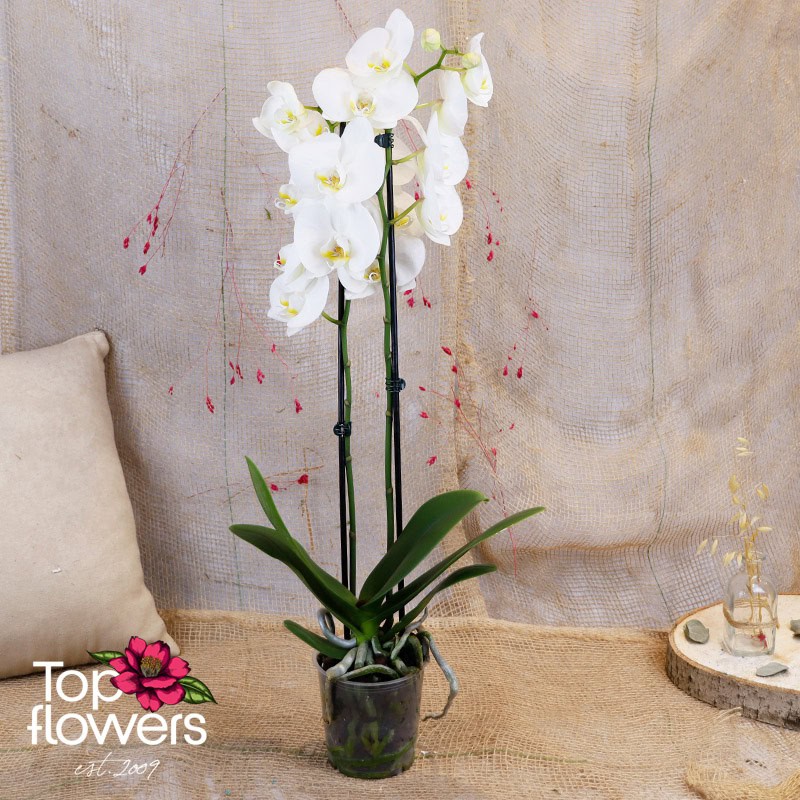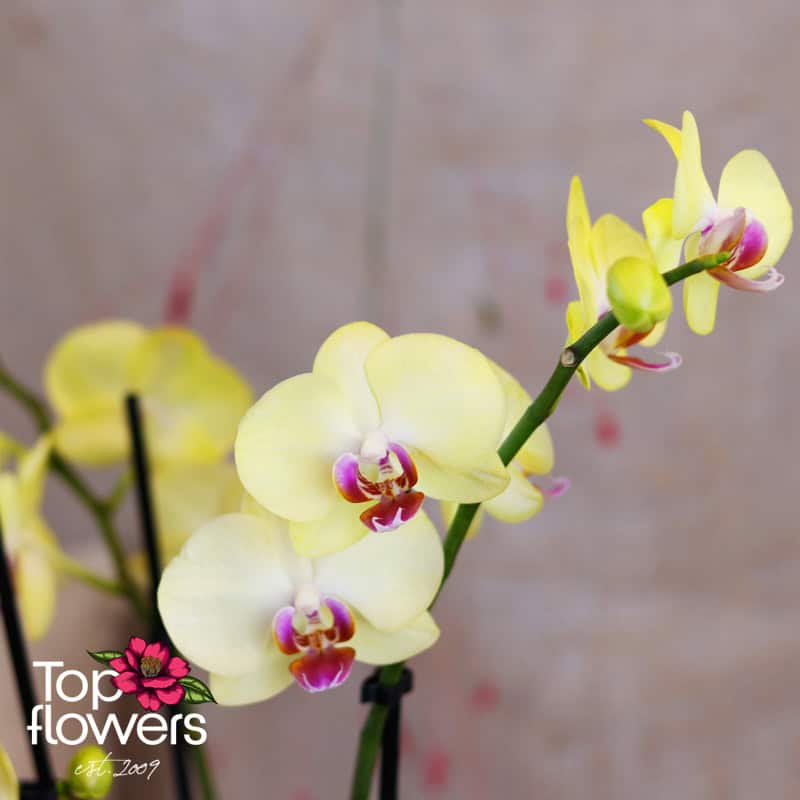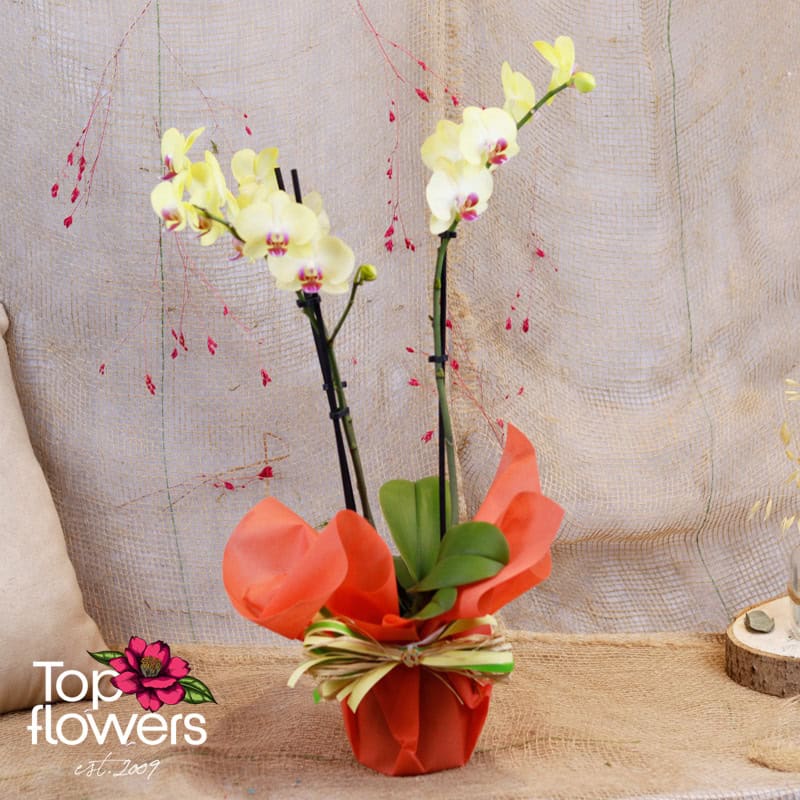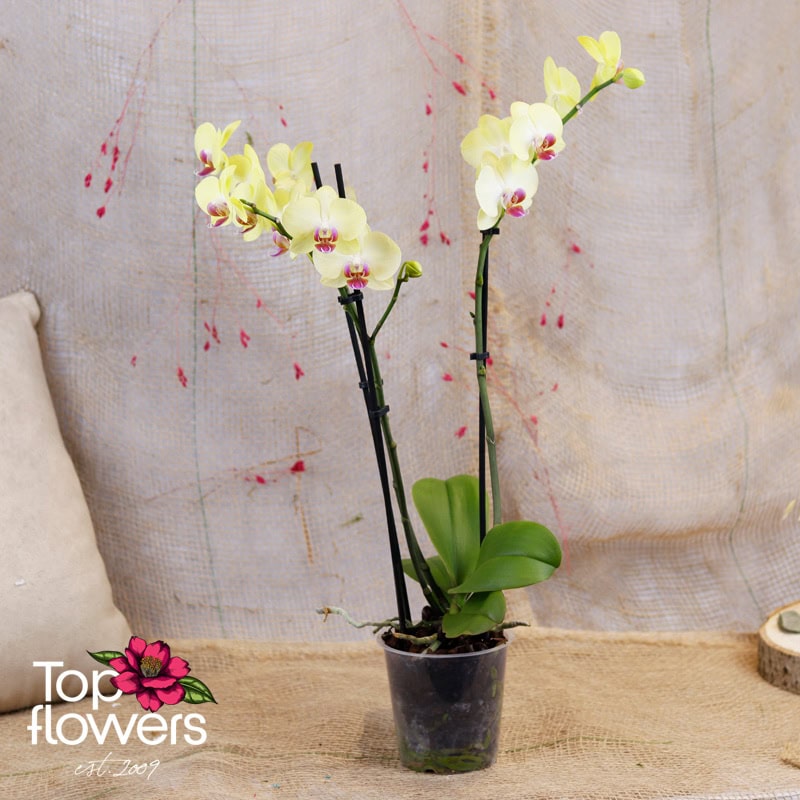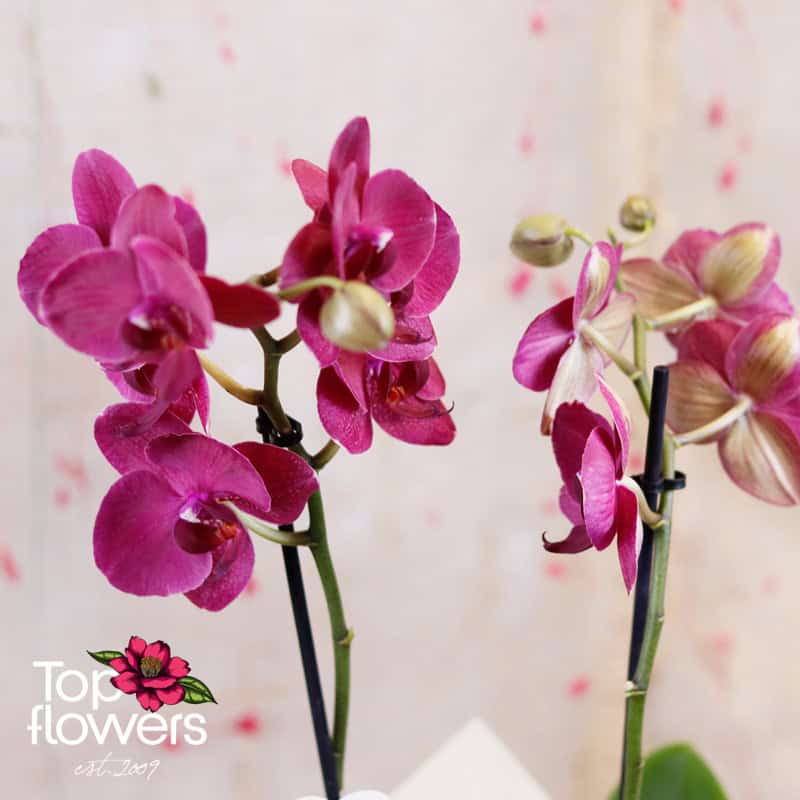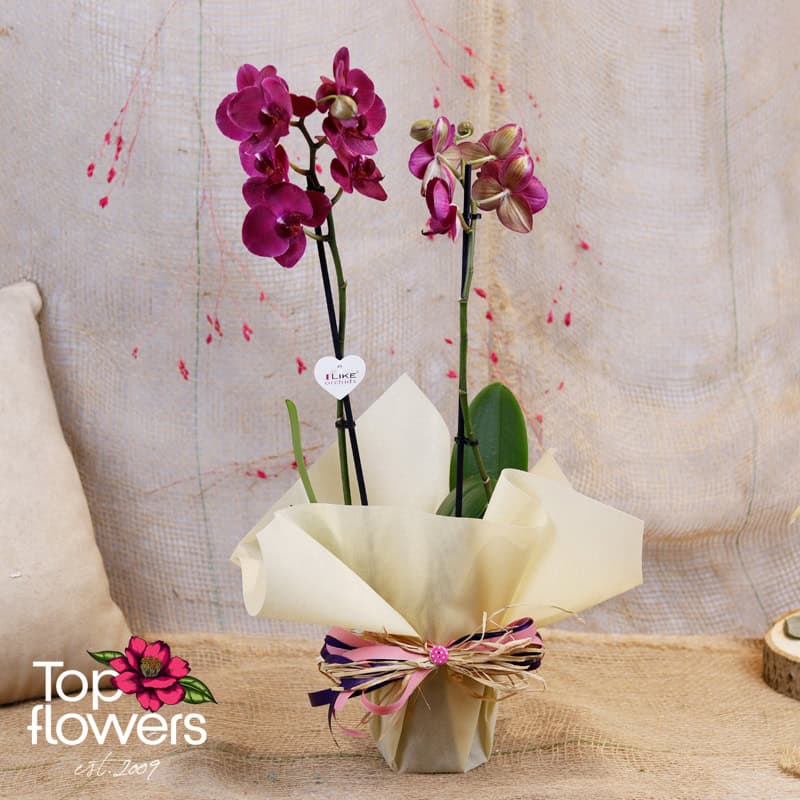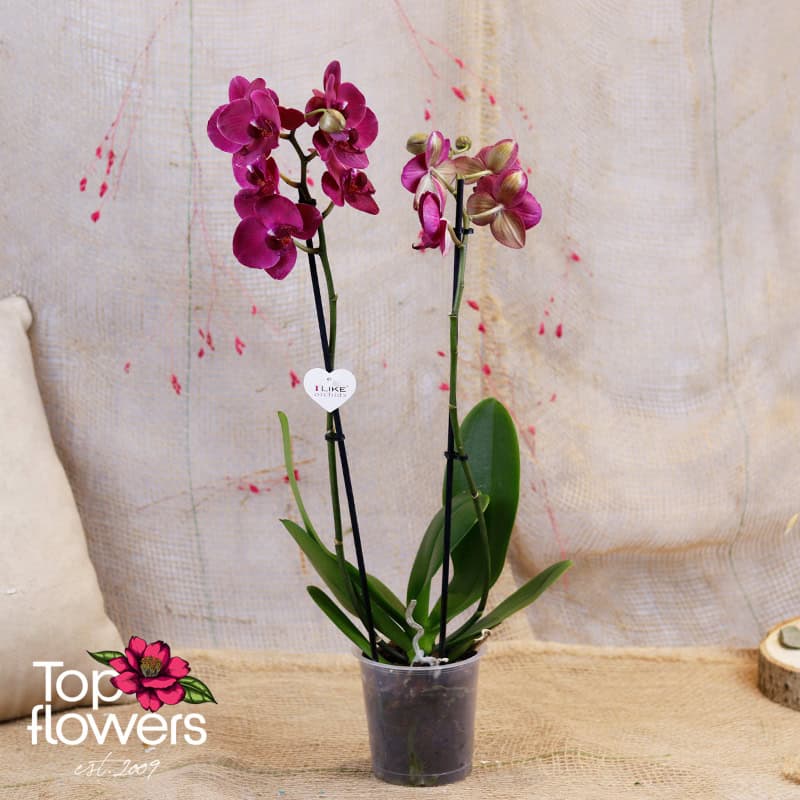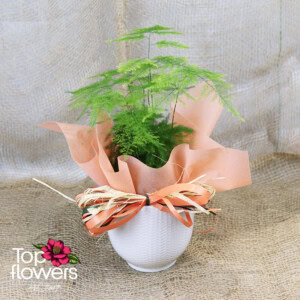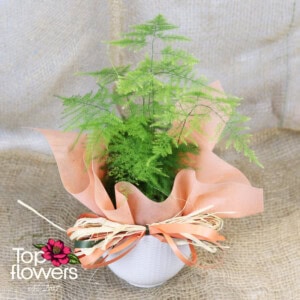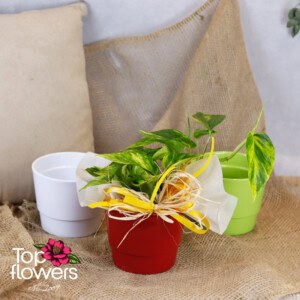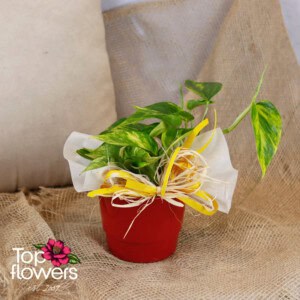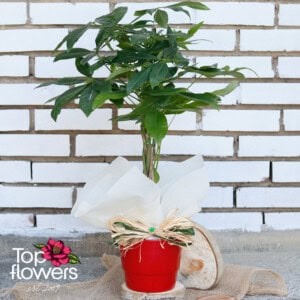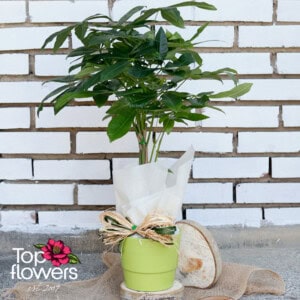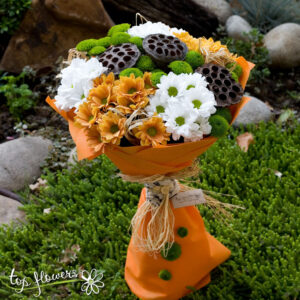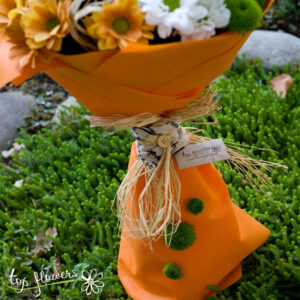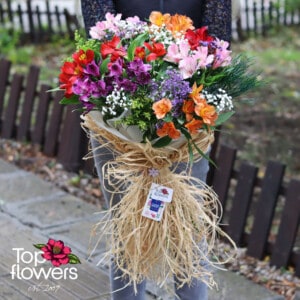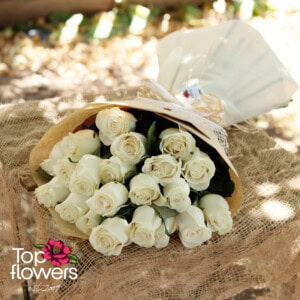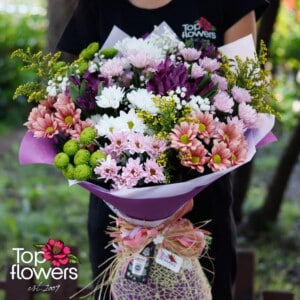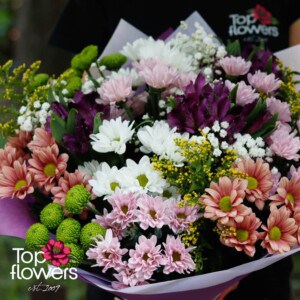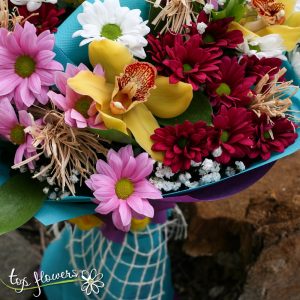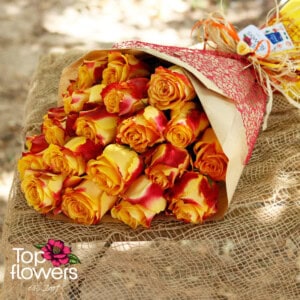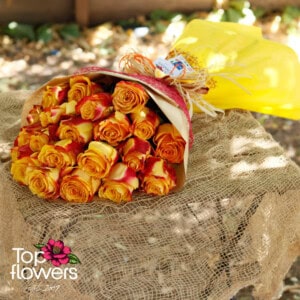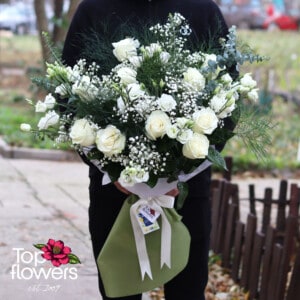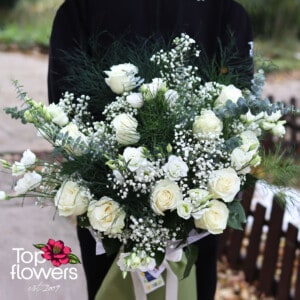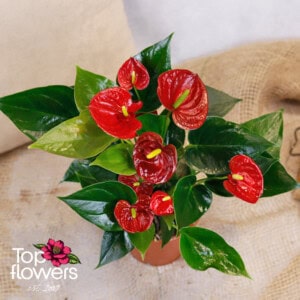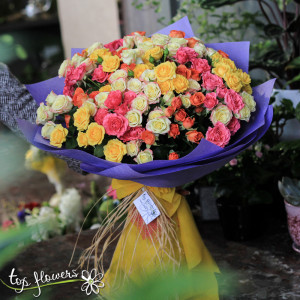Phalaenopsis orchid, often referred to as the "butterfly orchid," is a popular and elegant flowering plant known for its exquisite and delicate flowers. Originating from Southeast Asia, these orchids are among the most common types grown in homes. They are characterized by graceful, arching stems and clusters of waxy, butterfly-like flowers that come in various colors, including white, pink, purple, and variegated or multicolored varieties. The leaves are typically dark green and broad. They are known for their long-lasting blooming period, which can extend from several months to a year. These orchids are considered symbols of beauty, luxury, and elegance.
Growing Tips:
Light: Phalaenopsis orchids thrive in bright, indirect light. Avoid direct sunlight, which can scorch the leaves. Ideally, place them in front of an east or north-facing window. You can also use a sheer curtain to filter intense light if necessary.
Temperature: Maintain room temperatures between 18-27°C (64-81°F). Avoid drafty locations and fluctuating temperatures.
Watering: Water with standing water by submerging the pot and plant in another container. Allow the roots to soak for about 10 minutes. Drain the plant well and return it to its usual spot. You can tell it's time to water when the roots turn light gray to silvery. If the roots are green, it doesn't need watering.
Humidity: Phalaenopsis orchids prefer humidity levels around 50-60%. You can increase humidity by using a water tray or a room humidifier. Spraying can help but avoid wetting the flowers and leaves.
Potting Mix: Use a well-draining orchid mix, usually containing bark, sphagnum moss, and perlite. Repot the orchid every 2-3 years, and a slightly larger pot is sufficient. Trimming the top portion of the roots and replacing the potting material is often enough.
Fertilizing: Fertilize the orchid with a balanced orchid fertilizer every 2-4 weeks during active growth (spring and summer). Reduce or stop fertilizing during the winter when the plant is not actively growing.
Pruning: After the flowers begin to fade and the stem turns brown, you can trim it above a visible node using scissors. The orchid can bloom again from the same stem or develop new stems from the base—avoid removing the main stems unless they are completely dried out.
Pests and Diseases: Regularly check for common pests such as aphids, mites, scale insects, and mealybugs. Treat them promptly with insecticides. Maintain good airflow to prevent fungal diseases.
The Phalaenopsis orchid is a beautiful addition to any home and can be a reward for your care, with its stunning and long-lasting flowers making it highly valuable.

